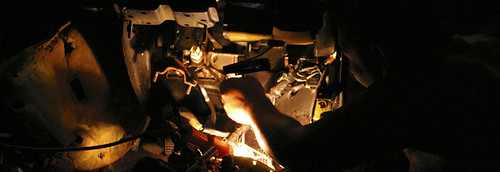How do I develop a photographic style?

Fun Fair in Kuala Terengganu (_DSC4908), originally uploaded by Fadzly Mubin.
Taken with a Nikon D50 and Nikon AF-S Zoom-Nikkor ED 18-55mm f/3.5-5.6G DX (kit-lens)
Fun Fair in Kuala Terengganu
Style comes with time and is a difficult thing to force. The tendency at first is to copy a well-known photographer (witness how many young photographers are trying to shoot like Eugene Richards or Mary Ellen Mark), but you must move beyond emulation and develop your own strengths. Be aware of the literal nature of your images and strive to go beyond them in an aesthetic sense, but avoid mere self-indulgence.
Labels: AF-S Zoom-Nikkor ED 18-55mm f/3.5-5.6G DX, Night, Nikon D50, Philosophy of Photography


















